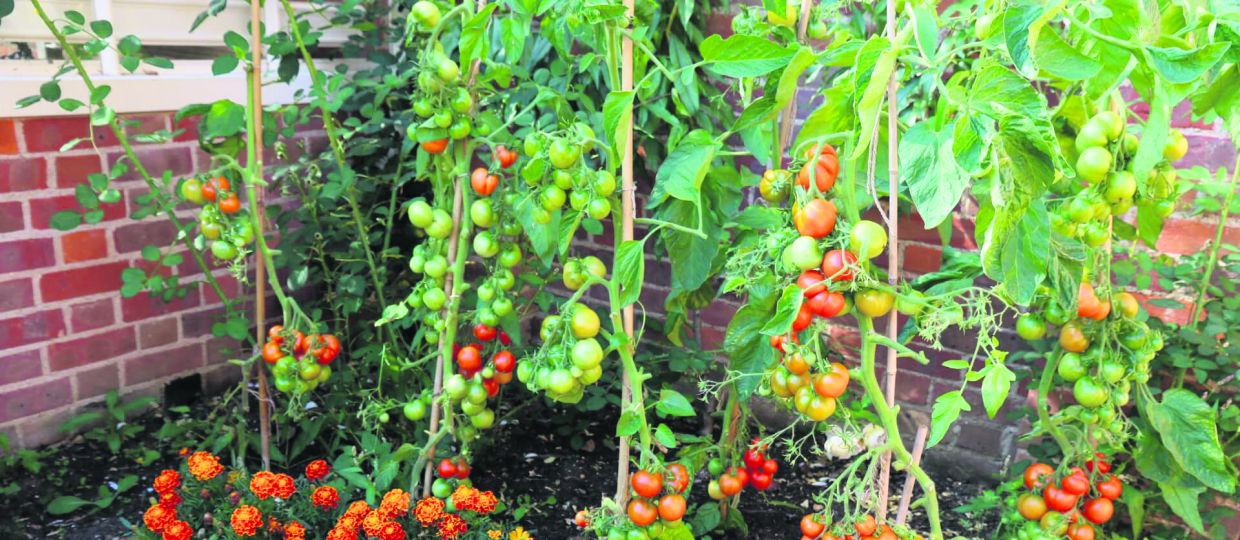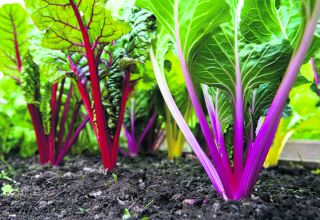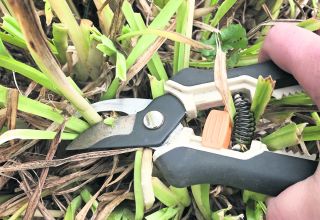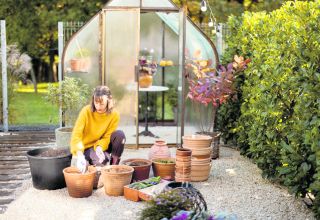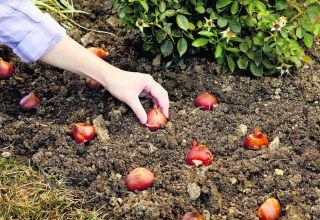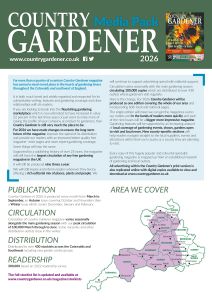July is often one of the hottest months of the year and probably the best time to sit out and enjoy your garden. It is vital to keep plants looking good by regularly dead-heading, which will mean a longer display of blooms. Make sure you keep new plants well-watered, using grey water where possible, and hoe off weeds, which thrive in the sunshine. There’s plenty to do to keep the display going and to enjoy great crops, including harvesting veg at its peak and feeding the lawn. Summer is progressing in its relentless way, and the garden is the place to be.
1. Tomatoes set to flourish
You should be seeing tomatoes flourish this month. Feeding the plants will ensure they continue to thrive all season to ensure they continue to produce healthy, flavourful fruit. Use a balanced fertiliser which is high in potassium, or one specifically formulated for tomatoes.
Feed plants every two to three weeks, moving to every week once the plant is mature.
Avoid getting fertiliser on the leaves as this can cause burn. It’s also important to make sure tomato plants are well-watered before feeding, as fertiliser can cause root burn if applied to dry soil. Water deeply after feeding to help the nutrients reach the root zone.
2. Deadheading will encourage a longer summer for your flowers
One of the most important garden jobs in July is keeping on top of deadheading, particularly for bedding plants. Deadheading in July is particularly important for bedding plants to encourage further blooming and maintain a tidy appearance. Firstly, look for flowers that are faded, wilted or starting to develop seeds. Cut the flower stem back to the first set of healthy leaves or a bud. This encourages the plant to direct its energy into producing new flowers rather than seeds. It’s important to use clean, sharp scissors or pruning shears to avoid spreading disease. Always check your plants at least once a week during the growing season and remove any dead or dying flowers.
3. Water anything recently planted
Anything you’ve planted in the past few months will need regular watering while it puts out roots into the surrounding soil and establishes itself. Make sure that you give these plants a thorough soaking rather than a gentle sprinkle.

4. You must support your plants
Supporting your plants is one of the most important jobs in June and July when there is often a great deal of height in the garden. Stake tall growing bulbs such as dahlias, lilies and gladiolus. Their flowers will make them top heavy and liable to blow over in the wind without some support. Loosen ties on trees and standard roses if they are becoming too tight. Fix tree ties so the buckle is on the opposite side of the stake to your tree, remembering to put the spacer in the middle to prevent chafing. Allow a little space for growing room but have it sufficiently tight so the tree cannot jiggle around excessively in the wind.
5. Don’t stop with making compost
Try to maintain a green/brown balance in the compost heap throughout the summer. Green materials are soft, high in nitrogen and not necessarily green in colour, for example coffee grounds, veg peelings and leafy prunings. Brown materials are often drier, more fibrous and with a higher carbon content, for example, twigs, cardboard, and wood (but not coal) ash. In the summer, most ingredients are green, which results in compost heaps with a lack of structure and air being squeezed out, so it’s important to add an equal proportion of brown ingredients.

6. Time to lift onions
In about the middle of July, watch for when about two thirds of onion tops are falling over, then push the rest down to soften the neck as sometimes they can develop a long stem and a neck that doesn’t dry very well. You don’t need to wait until the tops go yellow before lifting, but you’re looking for the bulbs to begin to change colour.
Pull them up and put them in a crate without being crowded so that air can circulate around them. Put it somewhere undercover such as in the greenhouse or garage.
Allowing them to dry like this is important as they will store better. Done this way they should keep until spring.
After they’ve dried in the crates for about a month, they’ll be ready to bunch up and hang in the house or in net bags until you need them.

7. Keep your pond healthy and looking great
Look out for any yellowing leaves If they are left on water lilies and other water plants, remove them promptly. Allowing them to fall off and rot in the water will decrease water quality.
Remove blanket weed This will let oxygen into your pond. Use a net or rake and remember to give aquatic life a chance to get back to the water by piling the weed next to the pond for a day.
Top up water levels. Water can evaporate rapidly from water features and ponds in the height of summer, so top them up if the water level drops significantly. Rainwater from a water butt is best – chemicals in tap water can affect the nutrient balance in the pond.
Hosepipe ban. If your area is under a hosepipe ban, you can still use it to top up your pond if you have fish.
Clear filters. Remember to clean any filters and pumps.
8. Keep sowing vegetables throughout July
There are lots of veg that can be sown over the next few weeks even though it is high summer to fill gaps as earlier crops are cleared and to give fresh veg into the autumn and winter. Sow kohlrabi, lettuce, leaf beet, chard, endive, chicory, Florence fennel, chervil and coriander.
Finish sowing beetroot and savoy cabbage in the first week of July.
After mid-July, sow land cress, Chinese cabbage and spinach.
From the end of July to mid-August, sow mustards, pak choi and salad rocket.
9. Get the right feeding plan for different plants
Different plants have different nutritional needs and different fertilisers are available to meet them. Fertilisers are available in different combinations of nitrogen, phosphorus and potassium with a different mix being needed for different parts for the garden.
Nitrogen encourages the production of strong stems and foliage, so fertilisers with high nitrogen levels are best for lawns and leafy vegetables.
Potassium-rich fertilisers help nourish flowers and fruit without over-feeding the stems, making them well suited to plants like dahlias and tomatoes.
Phosphorus is essential for seed germination and for young plants to develop good root growth. Root vegetables such as carrots and turnips need a high phosphorous fertiliser.
10. Lift and divide wherever you can
Lift, divide and replant congested and over-sized clumps of early-flowering perennials such as bearded iris, polyanthus and pulmonaria once they’ve finished flowering. This will allow them to form roots and flower buds for next year in their new location before the weather gets too cold.
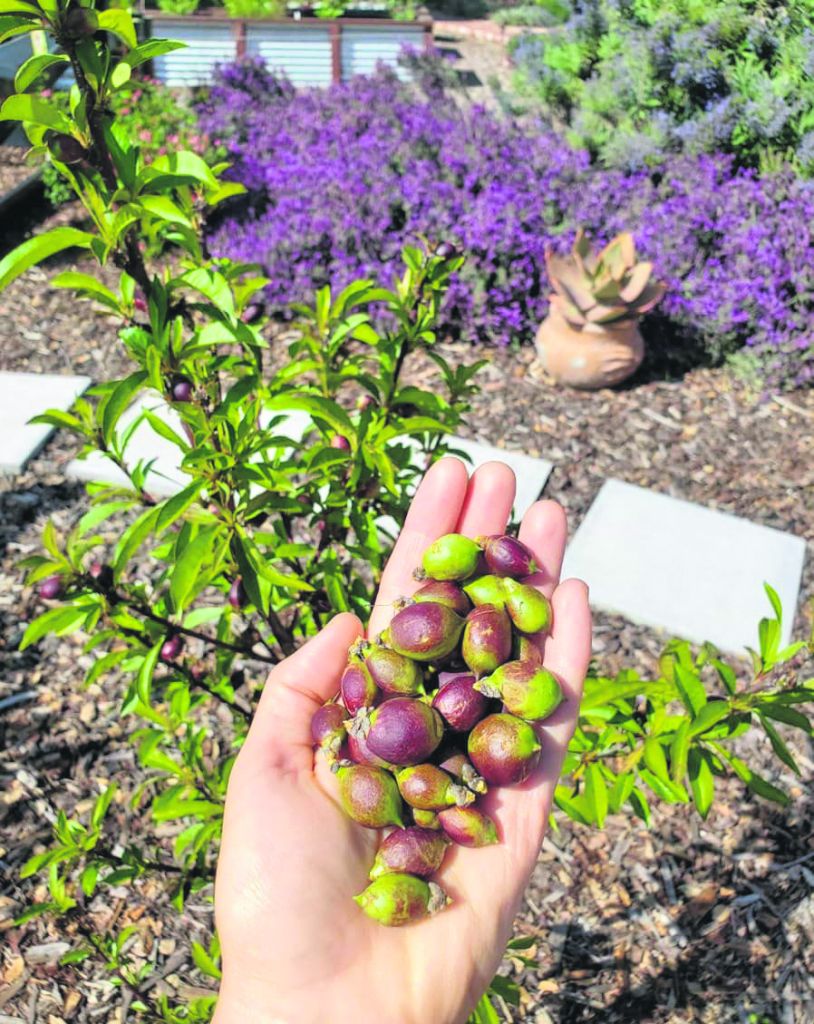
11. Thin out the fruit on trees
June into July is the season for maximum plant growth which mean that fruit trees can abundantly over-produce. Large quantities of heavy fruits such as apples, pears and plums on the branches can often result in a final crop of disappointingly small fruits. This is due to the high demand put on the tree’s resources and the limited sunlight penetrating its heavy branches.
July is the prime time to thin out your dense crops by removing any excess or damaged fruits from the plant, enabling it to develop a more evenly ripe crop of fruits.
Prune stone fruit trees such as cherry and plum this month, removing any crossing branches to maintain an open framework. These fruit types are susceptible to certain fungal diseases through open wounds if pruned in the winter, whilst pruning at this time helps to avoid risk of infection.
12. Take cuttings from shrubs and alpines
July is a good time to take cuttings from shrubs and alpines. Take the cuttings from non-flowering shoots and place them around the edges of small pots that are filled with peat and perlite. Water the cuttings in and keep them warm but out of direct sunlight.
13. Fruit and vegetables
Water and feed everything regularly especially tomatoes. Tie them into their canes and pinch the outside shoots on cordon varieties to encourage fruiting. The last sowing of French beans and carrots can be done this month.
Also transplant purple sprouting broccoli and winter leeks into their final position. Water leeks well. They will be approaching their main growing season and regular watering will help them to swell
Keep sowing seeds for salads, a few at a time as well as autumn cropping peas, turnips and spring cabbages.
14. Don’t forget to feed roses
It is a good idea to feed your roses in midsummer as this will help them produce a second flush of flowers. For any roses that have finished their first flush of flowers, trim them back before feeding. Roses need pruning because this encourages them to produce new shoots, since cutting back a branch helps the rose to produce a growth hormone. When cutting them, make a cut 5mm above an existing bud with gardening shears. Ensure the cut is angled away from the plant as this prevents rainwater from collecting and causing disease as a result.

